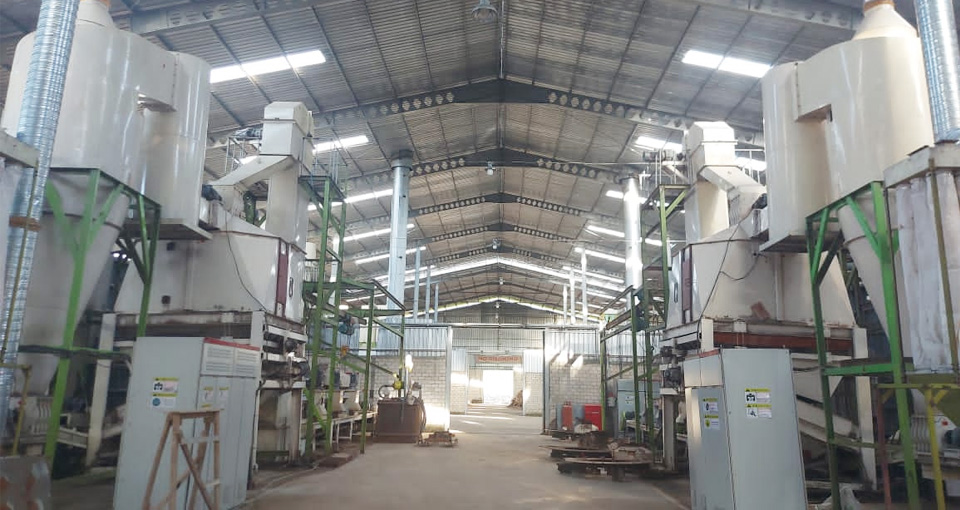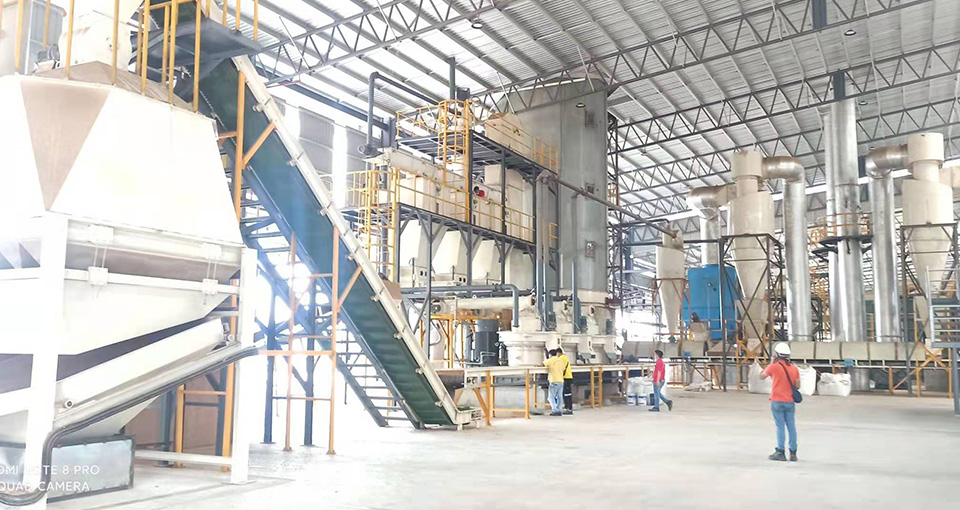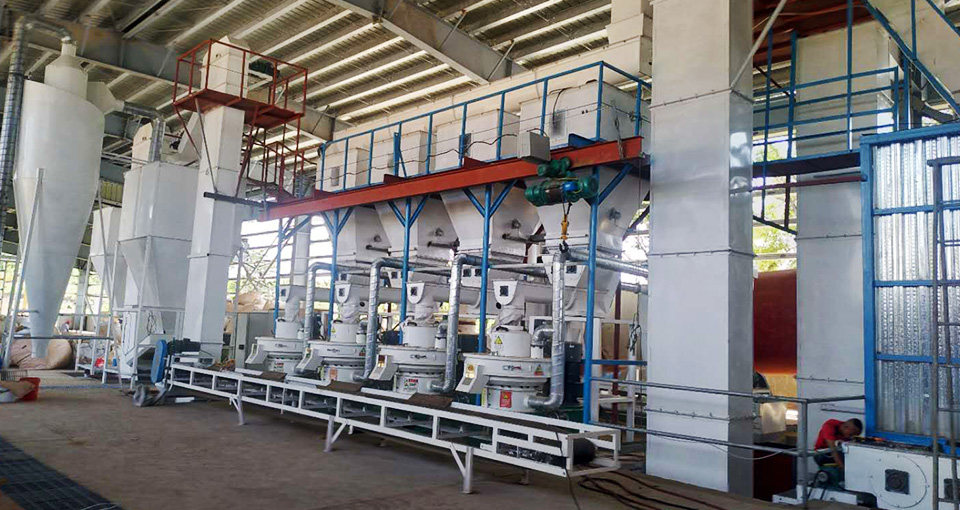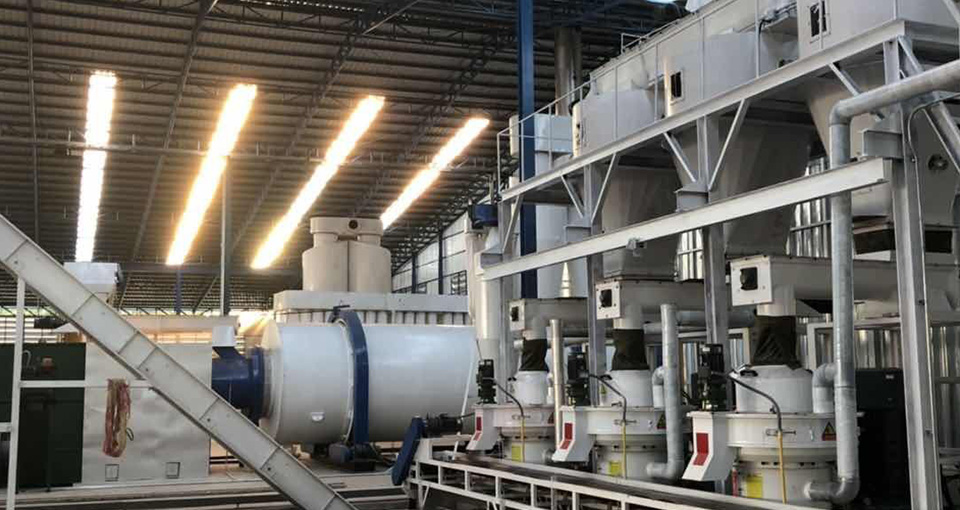
The quality of wood pellets is the most concerned issue for every pellet manufacturer, because it directly affects the pellet manufacturer's product sales. When pressing wood pellets, the pellets are not formed and powder suddenly appears. This is a problem that many pellet manufacturers will encounter. As a professional manufacturer in the wood pellet machine industry, we hope to help you avoid these problems.
First of all, don't panic when you encounter this situation. The sudden appearance of powder indicates that the early suppression is ideal. We can follow the following steps to eliminate them one by one:
Firstly: Check whether the mould of the wood pellet machine has reached the wear cycle. We only need to open the pellet machine cover and take a look. If the wear of the mould has indeed reached the end of its service life, then we will replace the mould and the problem will be solved. How to judge whether the mould has reached the wear cycle? The feeding and pouring mouth of the mould is a bell mouth and a tapered mouth. When the tapered mouth is completely worn away, the mould will be scrapped and can no longer be used.
Secondly, check whether the roller assemble has reached the end of its service life. When the roller assemble has reached its wear and tear cycle and can no longer be used. First of all, there are many grooves on the surface of the roller assemble. These grooves are used for eating materials. They are called feeding troughs. There will be many convex grooves on the surface of the roller assemble. When these small ridges are completely worn away, they will be worn away, the pressure roller will be scrapped. Even if it is reused, it cannot hold the material, and the pellets that come out are not well formed. Secondly, during the heat treatment of this roller assemble, a layer of reinforced coating will be formed on the surface, which is about 1mm. If this 1mm is worn away in the early stage, it will be relatively wear-resistant in the early stage, but in the later stage, it will wear out very quickly. Therefore, when dust and powder appear and the pellets are not formed, you must first check whether the mould and roller assemble are worn.
Thirdly, check whether the materials have changed. If the mould and roller assemble have just been replaced, it is definitely not a problem of wear cycle. Then you need to check whether the materials have changed. For example, you used to use poplar, mahogany and other hardwood materials, but today you use a relatively fluffy material. At this time, the compression ratio is not appropriate, and powder will be produced. This is one of the reasons.
Fourthly, check whether the moisture content of the material has changed; if your mould and roller assemble have not reached the wear cycle and the material has not been replaced, then we need to check whether the moisture content of the material has changed. For example, if your area has continuous rainy weather, in the rainy season, the material will be relatively damp and the humidity will be relatively high. This situation will also affect the molding degree of the wood pellets.
Fifthly, if the material is too dry, it will also affect the molding degree of the pressed pellets. For example, if your raw material is rice husk, and the local climate is relatively dry, a special material state will be formed. The mould and roller assemble have just been replaced. The smoothness of the mould holes is relatively good. If the particularly dry rice husk is added, the powder will generate not pellets. Because the new mould hole wall does not form a frictional resistance, the material will be squeezed directly out. How to solve this problem? You need to take some materials that are easier to form, such as sawdust or materials with relatively large friction resistance. First, block the hole in the grinding tool so that the wood particles remain inside, and then add rice husks, the front and back are connected, and the molding degree is improved.
Sixthly, check whether the roller stops rotating. The reason why the roller does not rotate: the bearing inside the pressure roller is locked, the oil is not injected in time, and the oil works at high temperature inside to form a dry oil state. As a result, the bearing does not rotate, then the pressure roller does not rotate, and the material discharge is bound to be poor; the roller wrap has been replaced many times, but the main shaft and bearing remain unchanged. During replacement, the direct gap between the roller wrap and the bearing is too large, the roller wrap is loose, then it does not rotate when pressing material.
Seventhly, check whether the direct gap between the roller and the mould is adjusted in place. The normal gap between the roller and the mould is 0.1-0.15mm. If the gap is not appropriate, powder will also appear when pressing the material.
I think many pellet manufacturers have encountered these problems. As a professional pellet machine manufacturer with more than 10 years of experience, we hope to provide you with more professional support. We hope that you can avoid these problems when producing wood pellets, so as to produce high-quality pellets that popular all over the world, becoming a leader in the pellet industry.
 20t/h Wood Pellet Production Line in Indonesia
20t/h Wood Pellet Production Line in Indonesia
Country: Indonesia
Capacity: 20t/h
Raw Material: subtropical trees
 10t/h Wood Pellet Production Line in Malaysia
10t/h Wood Pellet Production Line in Malaysia
Country: Malaysia
Capacity: 10t/h
Raw Material: wood log (acacia wood, eucalyptus wood)
 10t/h Wood Pellet Production Line in Philippines
10t/h Wood Pellet Production Line in Philippines
Country: Philippines
Capacity: 10t/h
Raw Material: wood log
 6t/h Wood Pellet Production Line in Thailand
6t/h Wood Pellet Production Line in Thailand
Country: Thailand
Capacity: 6t/h
Raw Material: wood log